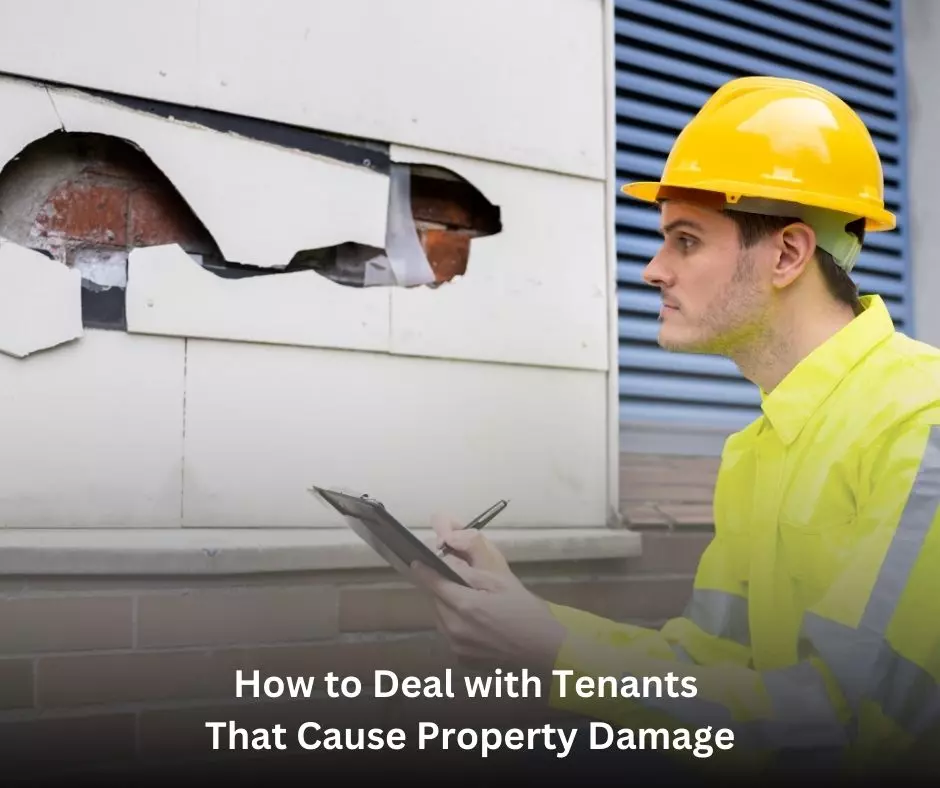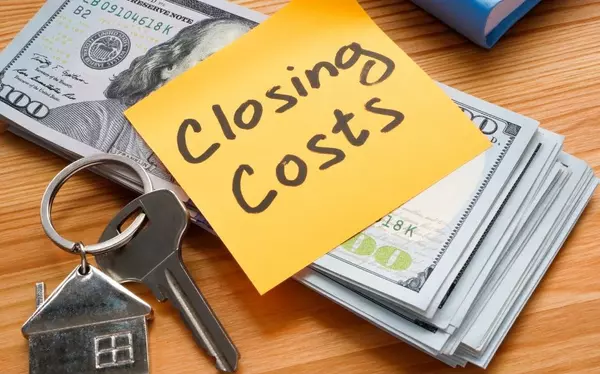How to Deal with Tenants That Cause Property Damage

How to Deal with Tenants That Cause Property Damage
Property damage caused by tenants is a common and frustrating issue for landlords. From minor wear and tear to significant structural damage, dealing with these problems can be costly and time-consuming. Addressing tenant-caused property damage effectively is crucial to maintaining the value and safety of your property. Ignoring these issues or handling them improperly can lead to further deterioration, increased repair costs, and potential legal disputes.
The aim of this blog is to provide landlords with practical steps to manage and mitigate property damage caused by tenants. We will cover essential topics such as preventive measures to reduce the likelihood of damage, immediate actions to take when damage is discovered, and strategies for handling disputes and repairs. By understanding and implementing these steps, landlords can protect their investments and maintain positive relationships with their tenants.
Proactive management and clear communication are key to preventing and addressing property damage. With the right approach, landlords can ensure that their properties remain in good condition and avoid costly and stressful situations. Read on to learn effective strategies and best practices for dealing with tenants that cause property damage.
Key Takeaways:
Dealing with tenant-caused property damage is a common and challenging issue for landlords. It's essential to address this problem effectively to maintain the property's value and avoid costly repairs. Here are the key takeaways for managing and mitigating property damage:
- Understanding Property Damage: Distinguish between normal wear and tear and actual damage. Normal wear includes minor scuffs and faded paint, while actual damage involves tenant-caused harm like broken appliances or structural issues.
- Preventive Measures: Implement thorough tenant screening, clear lease agreements, and regular property inspections. These steps help set expectations and reduce the risk of damage.
- Immediate Steps: When damage is discovered, document it thoroughly with photos, videos, and detailed descriptions. Notify the tenant promptly and professionally, and obtain repair estimates from multiple contractors.
- Assessing Liability and Costs: Determine if the damage is tenant-caused and consult the lease agreement. Use security deposits to cover repair costs, following legal guidelines and providing an itemized list of deductions.
- Handling Disputes: Communicate clearly with tenants, negotiate repair costs, and consider mediation if necessary. If disputes persist, seek legal advice and ensure all documentation is in order.
- Repair and Maintenance: Choose reputable contractors by checking references and obtaining multiple quotes. Oversee the repair process to ensure timely and quality work, and conduct follow-up inspections.
- Preventing Future Damage: Educate tenants on property maintenance, encourage open communication, and perform regular upkeep and preventive maintenance. Upgrading vulnerable areas can also help minimize future damage.
Understanding the Types of Property Damage
Understanding the difference between normal wear and tear and actual damage is crucial for landlords. Normal wear and tear refers to the gradual deterioration of a property due to everyday use. This can include minor scuffs on walls, worn carpets, or faded paint. These are expected and are usually not the tenant's responsibility to repair.
On the other hand, actual damage refers to harm caused by tenant negligence or misuse. This can range from structural damage, such as holes in walls or broken tiles, to more severe issues like water damage or broken windows. Identifying these distinctions helps landlords determine when to charge tenants for repairs.
Common types of tenant-caused damage include:
- Structural damage: This involves harm to the physical components of the property, such as broken doors, damaged flooring, or holes in walls.
- Appliance damage: Misuse or neglect can lead to malfunctioning or broken appliances, from stoves to refrigerators.
- Landscaping or exterior damage: Neglecting the yard, causing damage to fences, or improperly parking on lawns can result in significant repair costs.
- Neglect-related damage: This encompasses issues like mold growth due to poor ventilation or pest infestations caused by unsanitary conditions.
Recognizing and categorizing these types of damage is essential for effective property management and ensuring the longevity of your investment.
Preventive Measures
Implementing preventive measures is key to minimizing property damage caused by tenants. The first step is thorough tenant screening. Conducting background checks and contacting references can provide valuable insights into a tenant’s history. Questions to ask previous landlords should include inquiries about the tenant’s behavior, care for the property, and any history of causing damage.
Another crucial preventive measure is drafting clear lease agreements. These agreements should include specific clauses regarding property maintenance and tenant responsibilities. Clearly outline what constitutes normal wear and tear versus actual damage, and detail the penalties for causing damage. This sets expectations from the beginning and provides a legal framework for addressing issues if they arise.
Regular property inspections are also essential. Schedule inspections periodically to monitor the condition of the property and identify potential issues early. During inspections, look for signs of neglect or damage, such as water leaks, mold, pest infestations, and structural issues. Documenting the property’s condition with photos and written reports can be invaluable if disputes arise later.
By implementing thorough tenant screening, clear lease agreements, and regular property inspections, landlords can significantly reduce the risk of property damage. These preventive measures not only protect the property but also foster a responsible and communicative relationship with tenants, ensuring a smoother rental experience for both parties.
Immediate Steps When Damage is Discovered
When property damage is discovered, taking immediate steps is crucial to mitigate further issues and ensure proper resolution. The first step is documenting the damage. Use photos and videos to capture the extent of the damage from multiple angles. Detailed written descriptions should accompany visual evidence, noting the location, nature, and severity of the damage. This thorough documentation serves as a record for insurance claims, legal proceedings, and discussions with the tenant.
Next, notifying the tenant promptly and professionally is essential. Communicate the issue clearly, explaining the nature of the damage and providing evidence collected. A polite but firm tone helps maintain a professional relationship while addressing the problem. It's important to outline the steps that will be taken to resolve the issue and any responsibilities the tenant may have in this process.
Obtaining repair estimates is the final immediate step. Contact multiple contractors to get quotes, ensuring a fair assessment of the repair costs. Evaluate the extent of the damage to determine the best course of action. This might involve temporary fixes to prevent further harm or comprehensive repairs to restore the property fully.
By documenting the damage, notifying the tenant professionally, and getting accurate repair estimates, landlords can efficiently manage and resolve property damage, protecting their investment and maintaining a positive landlord-tenant relationship.
Assessing Liability and Costs
When dealing with property damage, assessing liability and costs is a critical step. The first task is determining responsibility. Evaluate if the damage was caused by the tenant's actions or due to other factors such as natural wear and tear, environmental conditions, or maintenance issues. Consult the lease agreement to understand the tenant's responsibilities regarding property care. If there is any uncertainty, seeking legal advice can provide clarity and ensure that actions taken are within the bounds of the law.
Next, consider security deposit deductions. The security deposit is typically used to cover tenant-caused damage. However, it is essential to follow legal guidelines to avoid potential disputes. Each jurisdiction has specific regulations on how security deposits can be used, what constitutes allowable deductions, and the timeframe for returning the remaining deposit. To guarantee adherence, familiarize yourself with these guidelines.
Provide the tenant with an itemized list of deductions, detailing the costs incurred for each repair. This transparency helps in maintaining trust and can reduce the likelihood of disputes. Include copies of repair estimates or receipts to substantiate the costs.
By carefully determining responsibility and adhering to legal guidelines for security deposit deductions, landlords can manage repair costs effectively while maintaining a fair and transparent relationship with their tenants. This approach not only protects the landlord’s investment but also ensures that tenants understand and respect their financial obligations.
Handling Disputes
When property damage leads to disputes, effective handling of disputes is essential for resolution. Start by communicating with the tenant. Approach the conversation with a calm and professional demeanor, focusing on negotiating repair costs and responsibilities. Clearly present the evidence of the damage, the associated costs, and the terms outlined in the lease agreement. Active listening is crucial to understand the tenant's perspective and work toward a mutually acceptable solution. Maintaining thorough documentation of all communications helps keep the process transparent and can serve as evidence if further actions are needed.
If negotiations fail, consider mediation and legal action. Mediation involves a neutral third party who facilitates discussions between the landlord and tenant to reach a compromise. This can be a cost-effective and less adversarial way to resolve disputes. Mediation is particularly useful when both parties are willing to cooperate but need assistance in finding common ground.
When mediation is unsuccessful or not feasible, legal action may be necessary. Before proceeding, ensure you have gathered all relevant documentation, including evidence of the damage, communication records, and any agreements made. Consult a legal professional to understand the appropriate steps and local regulations regarding property damage disputes.
By effectively communicating, maintaining professionalism, and considering mediation or legal action when necessary, landlords can navigate disputes efficiently, protecting their property and legal interests.
Repair and Maintenance
Effective repair and maintenance are vital for maintaining a rental property's value and ensuring tenant satisfaction. When damage occurs, choosing the right contractors is the first step. Start by gathering multiple quotes from different contractors to get a sense of fair pricing. Ensure the contractors are reputable by checking references, reading online reviews, and verifying their credentials and insurance. This due diligence helps avoid potential scams and ensures quality work.
Once you've selected a contractor, the next step is overseeing repairs. Clearly communicate your expectations and the scope of work to be completed. Regularly check in with the contractor to monitor progress and address any issues that may arise. Timely and effective communication can prevent misunderstandings and ensure that the work is completed as agreed.
After the repairs are done, conduct follow-up inspections to ensure everything is in order. Check that all repairs have been carried out correctly and that the property is in good condition. This step is crucial for verifying the quality of the work and for documenting the property’s condition post-repair.
By carefully selecting contractors, overseeing the repair process, and conducting thorough follow-up inspections, landlords can ensure that repairs are done correctly and efficiently. This proactive approach not only protects the property but also contributes to tenant satisfaction and the overall success of the rental business.
Preventing Future Damage
Preventing future damage to rental properties is essential for maintaining their condition and value. One effective strategy is educating tenants. Provide clear guidelines and tips for property maintenance when tenants move in. This can include instructions on proper use of appliances, how to avoid common damage issues, and steps for routine cleaning and upkeep. Encourage tenants to report maintenance issues promptly by fostering an environment of open communication. Let them know that addressing minor issues early can prevent more significant problems down the line.
Regular upkeep and maintenance are also crucial. Plan regular inspections to spot possible problems early on and take action before they get worse. This can include inspecting plumbing, electrical systems, and structural elements like roofs and foundations. Preventive maintenance, such as cleaning gutters, servicing HVAC systems, and sealing cracks, can significantly reduce the likelihood of damage.
Additionally, consider upgrading and reinforcing vulnerable areas of the property. This might involve installing more durable flooring in high-traffic areas, upgrading fixtures to more robust models, or adding protective measures like water-resistant barriers in basements. These proactive steps can minimize wear and tear and enhance the property’s resilience to damage.
By educating tenants and committing to regular maintenance and upgrades, landlords can effectively prevent future damage, ensuring a well-maintained and valuable rental property. This proactive approach not only preserves the property's condition but also promotes a positive and cooperative relationship with tenants.
Categories
Recent Posts










